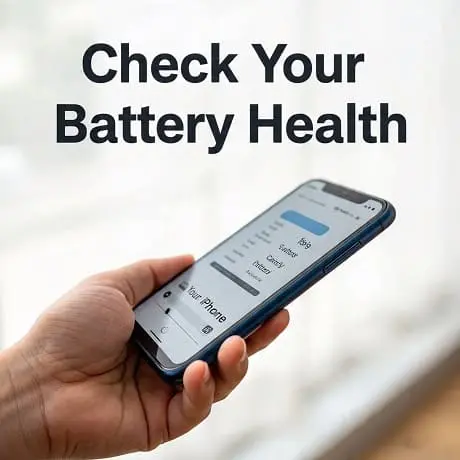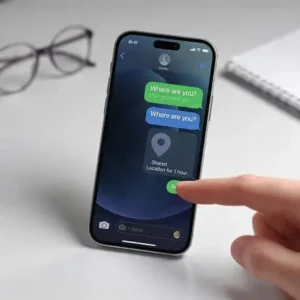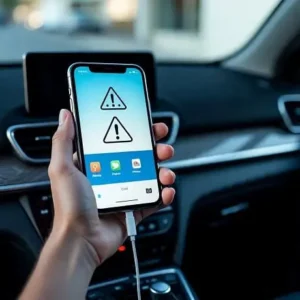Your iPhone’s battery is the lifeline of your device, powering everything from important calls to your favorite apps. Battery health directly impacts your iPhone’s performance, usability, and longevity. Understanding how to check and maintain your iPhone’s battery health can help you prevent unexpected shutdowns, maintain optimal performance, and decide when it’s time for a battery replacement.
With each charge cycle, all lithium-ion batteries—including those in iPhones—gradually lose their capacity to hold a charge. When your battery health drops significantly (typically below 80%), you may notice reduced performance and shorter usage times between charges. Apple states that a normal battery is designed to retain up to 80% of its original capacity at 500 complete charge cycles under ideal conditions.
This comprehensive guide will walk you through multiple methods to check your iPhone’s battery health, interpret the results, and provide practical tips to maximize your battery’s lifespan—ensuring you get the most out of your device.
How to Check Battery Health on iPhone
Checking your iPhone’s battery health is important to understand how well your battery is performing, whether you might need a replacement, and how to maximize usage. Apple provides built-in tools for this. Here’s how to check:
- Open Settings on your iPhone.
- Scroll down and tap Battery.
- Tap Battery Health & Charging (for iPhones with iOS versions before newer models) or simply Battery Health (especially on iPhone 15 and later).
- You’ll see Maximum Capacity — this is a percentage comparing the battery’s current capacity to when new.
- Also check Peak Performance Capability, which tells you whether your iPhone can deliver full performance. If the battery is degraded, you may see messages about performance management.
This built-in screen may also show other messages, such as “Battery health is significantly degraded” or that performance management has been applied.
How Do I Know If My iPhone Battery Health Is Good?
What constitutes “good” battery health depends on a few factors: the percentage, performance behavior, and how you use the device.
- Above ~90-100%: This is excellent. Near-new condition.
- Around 80-90%: Still good. Apple uses 80% as a benchmark: their design goal is that the iPhone battery retains at least 80% of its original capacity after a certain number of charge cycles under normal conditions.
- Below ~80%: From this point you may start to notice reduced battery life, possibly slower charging, or that the device may not sustain peak performance. Apple and many users consider replacing the battery when it drops below ~80%.
Also, if you see messages in the Battery Health screen about degraded battery, unable to deliver peak power, or sudden shutdowns, even if capacity is above 80%, that suggests problems.
Is 70% a Good Battery Health for iPhone?
70% battery health means your battery’s maximum capacity is at 70% of what it was when new. Here’s what that usually means in practice:
- You will likely observe noticeably reduced battery life (fewer hours between charges).
- Peak performance may be impaired. You might get performance management features or slower responsiveness.
- Apple generally considers below 80% as significantly degraded; 70% is well below that threshold, so it is not considered good. You may want to plan for a battery replacement, especially if battery life or performance are important to you.
Is 76% Battery Health OK?
76% is slightly better than 70%, but still below the “good” threshold. Whether it is “OK” depends on how you use the phone and how willing you are to accept reduced battery performance.
- For light use (calls, messages, light apps), 76% can be tolerable.
- For heavier use (gaming, video, background tasks), you’ll likely notice the phone needing to be charged more often, slower charging, more heat, etc.
- Apple’s design target of “good” battery health is usually ≥80%, so 76% is below that. It’s borderline. If you see other signs like reduced performance or warnings, replacement is advisable.
Is 85% Battery Health Good After 1 Year?
85% after a year is somewhat common depending on usage, charging habits, temperature exposure, and how often full charge cycles happen.
- Yes, 85% after a year is generally acceptable. It indicates some battery aging, which is natural in lithium-ion batteries.
- Some users may expect slightly higher (90-95%) depending on care, but 85% is not bad.
- If you want your iPhone to feel as close to new as possible, then better charging habits (avoiding deep discharges, avoiding high heat, using optimized charging) can help.
How Do I Get 100% Battery Health on My iPhone?
Getting and keeping 100% battery health is challenging over time, because batteries naturally degrade. But you can maximize battery health by following best practices:
- Avoid full charge cycles — try to keep battery level between ~20-80% instead of full 0-100 all the time.
- Use Optimized Battery Charging (an iOS feature) — it delays charging past 80% until you need the phone to be fully charged.
- Avoid high temperatures — heat is one of the biggest enemies of battery health. Don’t leave device in hot car, avoid charging while very hot.
- Use proper chargers — original or certified chargers; don’t use very cheap or damaged accessories.
- Software updates — iOS updates sometimes include battery management improvements. Keeping iOS up to date can help.
- Reduce background load — disable background app refresh for apps that don’t need it; keep brightness reasonable; avoid unnecessary notifications; reduce screen time or turn off heavy tasks when possible.
Even if you follow all best practices, battery health will decline over time due to chemical aging. There is no realistic way to keep it at exactly 100% forever. But you can slow the drop.
How Long Is the Battery Life on the iPhone 15?
Knowing how long the battery life lasts for iPhone 15 can give context to what “good” means in practice.
- Apple designs iPhone 15 batteries to retain 80% of their original capacity after 1000 complete charge cycles under ideal conditions.
- In real-use scenarios, how many hours one gets depends on usage: screen-on time, apps, background tasks, network conditions, etc. With light to moderate usage, users can often get a full day (from morning to night) without charging. Heavy usage (gaming, video streaming, high brightness, GPS, etc.) will reduce that.
So the battery life will start high when new, but gradually decline, and 80% capacity after high use is still considered acceptable for many users.
If you’ve noticed your battery health appearing lower or your battery draining faster after updating, you might also want to read our article on temporary battery drain after updating to iOS 26: the ultimate solution that explains why this happens and how to fix it.
Frequently Asked Questions (FAQs)
What does “Maximum Capacity” mean in iPhone Battery Health?
Maximum Capacity” shows how much charge your iPhone battery can hold compared to when it was new. If it’s 100%, the battery is as good as new; if it’s lower, that means the battery has aged and holds less charge. Over time this number naturally decreases. Apple includes this in Settings → Battery → Battery Health.
What is Peak Performance Capability?
Peak Performance Capability is a status in Battery Health that tells you whether your iPhone can still deliver full performance. If your battery is degraded or if your device has experienced an unexpected shutdown, iOS may apply “performance management” which limits certain processor functions to avoid crashes. If the battery is still good, it will say something like “Your battery is currently supporting normal peak performance.
When should I replace my iPhone battery?
You should consider replacing your battery when the Maximum Capacity drops below about 80%, especially if you’re also seeing performance issues (slowdowns, unexpected shutdowns, etc.). Apple considers capacities under ~80% as significantly degraded in many scenarios. Also, if the device shows messages like “Your battery’s health is significantly degraded,” that’s a signal to get a replacement.
Why is my iPhone battery draining fast after a major iOS update?
After major updates (like from one iOS version to another), it’s common to see higher battery drain temporarily. That’s because background tasks often run: system indexing, app updates, re-optimizations. These run in the days immediately after the update. Usually this slows down after things settle.
Does keeping battery health at 80-85% mean my iPhone is still usable?
Yes. If your battery health is around 80-85%, your phone is still usable, especially for everyday tasks. You may notice somewhat reduced battery life or slightly slower performance during heavy usage, but for many people it will still meet needs. If you’re a heavy user (games, long video, heavy multitasking), you might feel the drop more. Replacing is more of a choice depending on how “good enough” feels to you.
Can battery health be restored?
No, battery health cannot be fully restored to 100% once it’s dropped. Lithium-ion batteries degrade over time due to usage, charge cycles, and environmental factors. What you can do is slow the rate of degradation by using good charging habits (avoiding extreme temperatures, using optimized charging, avoiding deep discharge or keeping it at extremes), but you won’t get back to 100% if it’s already dropped.
What is “Unable to Verify Battery Health” message and what should I do?
This message appears when the iPhone cannot verify that the battery is a genuine Apple battery, or if the battery has been replaced with an unknown or non-certified part. In those cases, the health information may not be accurate. The best action is to have the battery checked or replaced by an Apple Authorized Service Provider.
Summary & Recommendations
- If your iPhone shows maximum capacity ≥80%, and no performance warning notices, your battery is in good health.
- Between 70-80%, it’s borderline; you’ll notice reduced performance or battery life.
- Below ~70%, replacement is probably needed if you depend on good performance or long battery life.
- Follow best practices (optimized charging, avoid overheating, moderate usage, good chargers, etc.) to maintain battery health.
- If after a year you see battery health dropped significantly below expectations (say ~80-85% or lower), evaluating a battery replacement is wise.



